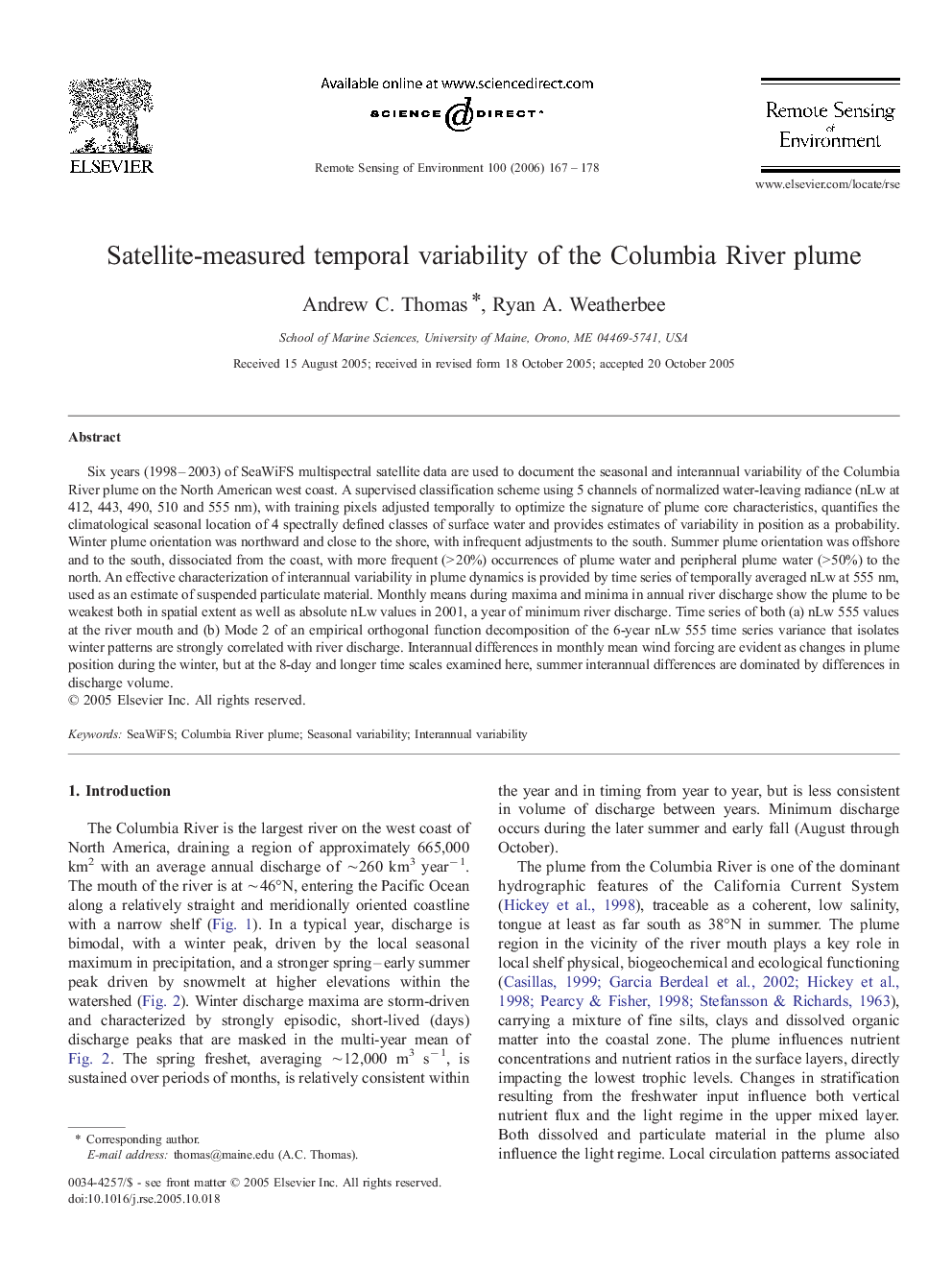| Article ID | Journal | Published Year | Pages | File Type |
|---|---|---|---|---|
| 4461178 | Remote Sensing of Environment | 2006 | 12 Pages |
Six years (1998–2003) of SeaWiFS multispectral satellite data are used to document the seasonal and interannual variability of the Columbia River plume on the North American west coast. A supervised classification scheme using 5 channels of normalized water-leaving radiance (nLw at 412, 443, 490, 510 and 555 nm), with training pixels adjusted temporally to optimize the signature of plume core characteristics, quantifies the climatological seasonal location of 4 spectrally defined classes of surface water and provides estimates of variability in position as a probability. Winter plume orientation was northward and close to the shore, with infrequent adjustments to the south. Summer plume orientation was offshore and to the south, dissociated from the coast, with more frequent (> 20%) occurrences of plume water and peripheral plume water (> 50%) to the north. An effective characterization of interannual variability in plume dynamics is provided by time series of temporally averaged nLw at 555 nm, used as an estimate of suspended particulate material. Monthly means during maxima and minima in annual river discharge show the plume to be weakest both in spatial extent as well as absolute nLw values in 2001, a year of minimum river discharge. Time series of both (a) nLw 555 values at the river mouth and (b) Mode 2 of an empirical orthogonal function decomposition of the 6-year nLw 555 time series variance that isolates winter patterns are strongly correlated with river discharge. Interannual differences in monthly mean wind forcing are evident as changes in plume position during the winter, but at the 8-day and longer time scales examined here, summer interannual differences are dominated by differences in discharge volume.
